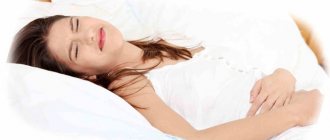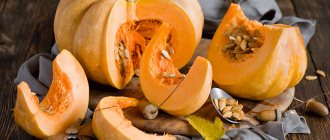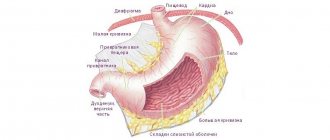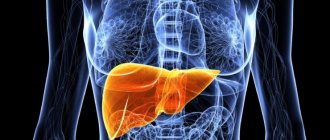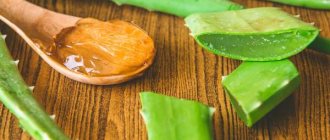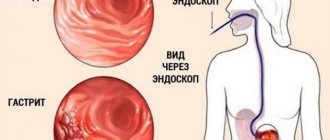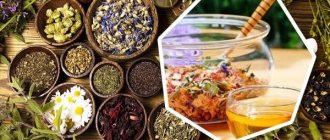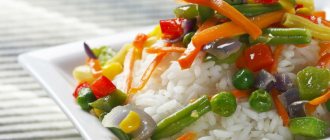Classification of herbs for the liver and gall bladder
To begin therapy with folk remedies, it is necessary to determine which herbs can be used in each specific case. Almost all plants have a pronounced choleretic effect. Other effects on the body vary. It is customary to classify herbs according to them.
Herbs that are used to treat the gallbladder and liver are divided into the following groups:
- Cholekinetics. Prevents stagnation of bile, helping it flow from the bladder to the intestines. The group is represented by common fennel, as well as various oils of plant origin.
- Choleretics. Activate liver cells. Plants such as birch, barberry, immortelle, centaury, and tansy are considered choleretic. Rowan and horseradish are also on the list.
- Cholespasmolytics. Reduces the tone of the bile ducts. Their relaxation promotes the outflow of bile. Cholespasmolytics include barberry, St. John's wort, arnica, oregano, sage, celandine, chamomile, and calendula.
It is not recommended to self-prescribe any herbal mixture or individual plant. You should contact a qualified professional. Based on symptoms and test results, the doctor will be able to select the optimal collection or variety of medicinal herb.
Herbal medicine gives excellent results
Since cholecystitis is accompanied by inflammation, its standard therapy often includes antibiotics and other potent drugs. But treatment with folk remedies can also be very effective, especially if it is carried out under the guidance of a doctor. In this case, the question becomes especially important: what herbs can you drink? If cholecystitis is acalculous, then the set of medicinal herbs that both increase and decrease the tone of the ducts is very diverse. You can even take them on your own without fear.
But if there are already stones in the bladder, then special care is required in this case, since choleretic preparations cause severe pain and can even cause blockage of the bile ducts. Then only emergency surgery can save a person.
In order to determine which herbs to treat a particular person, you must first establish the type of cholecystitis, what caused it, and what concomitant diseases are present. Then you can try different herbal mixtures.
Herbal recipes for hypomotor dyskinesia are mostly based on barberry, immortelle sandy, peppermint and corn silk.
Herbal recipes for hypermotor dyskinesia include rowan, centaury, chamomile, oregano, caraway, shepherd's purse, yarrow, and calamus.
An almost universal remedy that can be used for any type of disease is milk thistle seed oil.
To relieve spasms, you can use anise, fennel, St. John's wort, bloodroot, and rhombifolia.
Along with the use of special preparations, it is recommended to use general strengthening agents, such as ginseng, eleutherococcus, and aralia.
Herbal decoctions and infusions can not only be taken orally, but also added to bath water. Here is a recipe for one of the very effective and surprisingly pleasant procedures: a mixture is made consisting of 5 parts of sweet clover, 10 parts of pine needles, 2.5 parts of small periwinkle, 2.5 parts of calendula, 2 parts of hop cones, 2.5 parts of birch leaves, 1.5 parts mountain arnica, 1.5 parts celandine. One hundred grams of this mixture should be poured with two liters of boiling water and allowed to cool completely. Add the strained mixture to the bath water. The duration of the procedure is 15 minutes.
Herbal recipes for the treatment of cholecystitis
Before treating cholecystitis with herbs, you should consult a doctor, who will recommend the most effective recipe in a particular case and warn about possible side effects.
- You need to take three parts each of dill and mint, two parts each of hawthorn fruit and immortelle herb, and one part chamomile. Grind everything thoroughly, brew in boiling water and keep in a water bath for 15 minutes. Cool, strain and drink 1/4 cup.
- Take equal amounts of a certain amount of string, elecampane and mint. Brew two tablespoons of the mixture with boiling water for 15 minutes, cool, and then drink 1/3 cup a day.
- Pour a glass of boiling water over calendula flowers (1 tablespoon), leave for 8 hours in a dark place, carefully covering, drink 1/3 glass every day.
- Wash oats (100 g) in several waters, pour boiling water (1.5 liters) and cook for about an hour over low heat. After 40 minutes, when the oats have softened, crush them with a masher or wooden spoon. The decoction should be taken before each meal (3-4 times a day) 100 g.
- A decoction based on St. John's wort will be effective. Pour 200 ml of boiling water over a tablespoon of herb, leave for 20 minutes and strain. Drink 1/4 glass of 200 ml 15 minutes before meals (lunch or dinner, but not breakfast).
- Mint is prepared in the same way, only it is infused for 2 hours, taken 2 times a day, 1/2 cup a few minutes before meals.
- You will need the following herbal collection: ½ teaspoon of crushed marshmallow root; ½ teaspoon of cumin seeds; 1 teaspoon of crushed peppermint leaves, 1.5 teaspoons of crushed sea buckthorn bark, 1.5 teaspoons of crushed medicinal sage leaves.
All ingredients are mixed, poured with 0.5 liter of boiling water, then the container must be placed in a water bath and heated for 20 minutes.
The strained mixture is taken 20 minutes before meals. If the stool is normal, then one glass is enough, but if you suffer from constipation, then the dose is increased to two glasses.
- The method of preparing this mixture is the same as in the previous recipe, and the selection of herbs for it is as follows: one and a half teaspoons of peppermint leaves, chamomile, lemon balm. Take 1/3 cup of the prepared mixture 20 minutes before meals.
- The following tincture is great for soothing an inflamed gallbladder. Ingredients: 2.5 teaspoons each of celandine herb and peppermint. The preparation and administration scheme is the same as in the first recipe. You can take this medicine for two months, then you need to take a break.
- During subsequent exacerbations of chronic cholecystitis, a herbal collection of the following composition helps well: ½ teaspoon each of wormwood, mint, immortelle flowers, dandelion root, buckthorn bark, plus two teaspoons of madder root. Preparation and dosage regimen are similar to the first recipe.
These infusions should be taken before meals!
A selection of popular herbs for the liver
You can prepare the herbs yourself or buy a ready-made mixture at the pharmacy.
The following plants are considered the most effective and accessible in the prevention and treatment of liver and gall diseases:
- Yarrow. Accelerates and normalizes metabolic processes. The plant dilates blood vessels, which leads to improved blood circulation in the liver. This, in turn, allows you to quickly defeat inflammatory processes.
- Immortelle. Promotes the removal of bile. It is its stagnation that most often provokes inflammation and the development of various diseases of the hepatobiliary system of the liver, bladder and their ducts. In addition, the plant copes with the task of eliminating pain. In case of liver and biliary pathologies, discomfort usually bothers you 10-20 minutes after eating.
- Dandelion. Cleanses the liver of accumulated waste and toxins. The components of the plant do not easily remove poisons from the body, but also neutralize the negative effects.
- Milk thistle. It is considered a panacea for liver diseases. The plant restores its damaged cells.
- Rose hip. Quickly and effectively cleanses the body of waste and toxins, and also helps to normalize the functioning of the digestive and excretory systems. This promotes the rapid removal of harmful substances.
- Chamomile. Responsible for improving blood circulation throughout the body and in the liver in particular. The herb helps get rid of accumulated waste and toxins that lead to improper digestion.
- St. John's wort. This plant has established itself as a natural antibiotic that quickly copes with inflammatory processes in the liver. Hepatitis is often treated with St. John's wort.
- Artichoke. Removes toxins from the liver, enriching the organ cells with useful substances. The plant will help normalize cholesterol levels.
- Calendula. It is considered a natural antiseptic, therefore it eliminates any inflammatory processes in the liver, and also kills parasites living in it.
- Knotweed. This is one of the main enemies of gardeners, but it is useful in the fight for liver health. The plant is a strong natural diuretic. Thanks to knotweed, the liver is cleansed of toxins. Additionally, the outflow of bile is normalized.
The listed herbs are used both separately and in herbal complexes. Sometimes bee products, fruit and vegetable juices are added.
Liver tubing with decoctions of medicinal herbs
Tyubazh (in some sources dubazh) is the cleansing of the bile and hepatic ducts. The procedure can be carried out using herbs, but it requires certain preparation and has many contraindications (cholelithiasis, diabetes, pregnancy and breastfeeding, colds, duodenal ulcers). Before doing this procedure at home, consult a specialist.
To carry out tubage, you need to drink a warm drink on an empty stomach, lie down on your right side and apply heat to the liver area for a while. This helps to dilate the ducts and drain bile. After tubage, you need to rest, have breakfast with vegetables and for the next 24 hours eat gentle foods according to the principle of table No. 5.
The role of a warm liquid can be a decoction of choleretic herbs to cleanse the liver - dandelion root, mint leaves, celandine, immortelle, lemon balm, licorice, corn silk. Herbs can be brewed individually or in a mixture and then drink 200 ml of infusion, and then lie down for 45 minutes. Herbal cleansing can be done once a week, the course depends on the person’s well-being and normal diet.
Popular herbs for the gallbladder
When malfunctions of the gallbladder begin, a person first of all feels pain on the right side under the ribs, as well as a bitterness in the mouth.
These are peculiar signals that indicate health problems. If the diagnosis confirms suspicions, doctors advise patients:
- corn silk;
- immortelle;
- oregano;
- yarrow;
- barberry;
- wormwood;
- peppermint;
- knotweed;
- St. John's wort.
Based on plants, various decoctions, tinctures and even teas can be prepared, which are effective choleretic agents.
The main thing is to choose the right dosages and be able to combine herbs with each other to achieve a quick and positive result in the treatment of gallbladder diseases. To avoid mistakes, pharmaceutical companies offer ready-made preparations. The dosage and schedule of administration are prescribed by the doctor.
Contraindications and side effects
Liver herbal tea is contraindicated for use in the following cases:
- in case of individual intolerance to one of the components included in the composition;
- the presence of cholelithiasis, in which large stones are present in the ducts.
As a side effect, an allergic reaction may occur, usually caused by the body’s intolerance to the components of the collection. An upset stomach and diarrhea may also occur; this is usually a signal of an overdose. It occurs if you take more than 0.5 liters of the drug per day or extend the course for more than a couple of months.
If any side effects occur, you must immediately stop taking the collection. If the dosage is correct, but the side effect persists, most likely this indicates an individual intolerance to some plant included in the composition. To determine it, you can donate blood samples.
Herbal recipes
Making a good and effective medicine at home to treat liver or gall bladder diseases is not difficult. You can buy raw materials at a pharmacy or prepare them yourself.
Suitable for therapy:
- Mint tea. Take 2 large spoons of the plant. Mint leaves and flowers are suitable for preparing a hot medicinal drink. They need to be filled with half a liter of boiling water so that the plant gives maximum beneficial properties. Leave for 20 minutes. After this, the composition must be passed through cheesecloth or a strainer to separate the grounds from the liquid. You need to drink 100 milliliters of mint tea every morning and evening. Thanks to the constant use of the elixir, liver activity will decrease and the pain will go away. In addition, tea helps normalize the proper flow of bile.
- Immortelle decoction. Take 6 tablespoons of the plant’s flowers and add half a liter of clean water, brought to a boil. Then, using gauze or a strainer, the grounds are separated. For use and therapeutic effect, you only need a liquid infused with immortelle flowers. You need to drink half a glass of broth 15 minutes before meals 3 times a day. The main task of the drink is to increase the amount of bile produced, which will help facilitate the digestion process, because it promotes the breakdown of fats.
- St. John's wort infusion. Take 2 large spoons of the plant, place it in a container and pour half a liter of boiling water. Afterwards, put the mixture on the fire and cook for 10 minutes. Let it brew for an hour, strain through cheesecloth or a sieve. Take 3 times a day, 50 milliliters. The remedy from St. John's wort helps to cope with dyskinesia, and also normalizes the proper functioning of the liver and gall bladder.
- Medicine based on calendula. You need to take a large spoon of the plant and pour 500 milliliters of boiling water. The resulting composition should be allowed to brew well, and then strain. It is recommended to take 200 milliliters 3 times a day.
Calendula infusion relieves inflammatory processes in the gallbladder and liver, helps reduce intoxication of the body after drinking alcohol, improves metabolic processes and improves bile secretion.
If you don’t trust pharmaceutical products, you can prepare the ingredients for making tea, decoction or tincture yourself.
Some summer residents and owners of private houses grow medicinal herbs themselves. When going to the fields and forests to gather, you need to have a plant identification guide on hand.
How to cleanse the liver with herbs
How to cleanse the liver with herbs and is it harmless to health? After all, plants can be quite dangerous, especially if there are stones. And not all herbs for the liver and gall bladder are used for certain diseases. It is important not to rush in this matter and to understand it properly. In addition, you can’t just go and start taking decoctions or infusions of herbs for the liver, pancreas or gall bladder - you first need to thoroughly prepare for cleansing.
Preparing for a liver cleanse
Before you start using herbs to cleanse and cleanse the liver from toxins and stones at home, prepare properly for this (2-3 days in advance):
- Cleanse your colon with laxatives or enemas for several days. When it is clogged, toxins removed from the liver are absorbed by the intestinal walls, causing even greater poisoning of the body.
- Start following a diet low in animal fats, completely avoiding alcohol, smoked and heavy foods. Alcoholic beverages should not be consumed for a month after using herbs to restore the liver.
- Avoid active physical activity. Any collection of herbs for the liver affects the gallbladder, ducts and neighboring organs. And overly active training, especially jumping and climbing mountains, can, against the background of an increased outflow of bile, provoke a sharp passage of stones with the development of colic.
When is the best time to clean?
It is advisable to cleanse the liver after a diet violation, when a person periodically consumes fatty foods, smoked foods, overeats and begins to feel unsatisfactory. Slagging can manifest itself as weakness, poor skin condition, and low brain productivity.
What are the results
A course of taking herbs to cleanse the liver allows you to achieve the following results:
- improve complexion;
- increase performance;
- reduce the number of infectious diseases, including influenza and other acute respiratory viral infections;
- restore normal sleep and good overall health;
- increase the activity of the hormonal system;
- slow down the aging process of the body.
Proper cleansing frees the liver tissue from bile clots, small stones, mucus, and supplies medications and hormones. And this increases the functionality of the organ, which also affects a person’s well-being.
Combination of herbs and other components in the recipe
The effect of herbs is determined by their composition. Many foods also contain beneficial substances. For example, honey and royal jelly are added to healing recipes. They contain biostimulants that regulate metabolic processes and restore damaged cells. Propolis is also used as a beekeeping product. Herbal teas with it are effective, for example, against hepatitis.
With the help of complex infusions you can:
- increase the tone of the gallbladder and liver;
- remove stagnation of bile by saturating the tissues with water and, as a result, diluting the liver secretion;
- improve the composition of bile by maintaining the correct level of beneficial acids, flavonoids, tannins, and vitamins;
- relieve pain and spasms by relaxing the muscles of the liver, gall bladder and their ducts.
To select the right ingredients as accurately as possible, you should consult a doctor. The same honey in some cases needs buckwheat honey, and in others meadow honey. Some patients are advised to add a spoonful of vegetable oil to their tea, as is customary in some Asian countries, for example, Mongolia. Doctors advise other patients to make herbal drinks based on lemon, radish, and beet juices.
Rules of application
The herbal mixture is used as a tea to cleanse the liver. It is recommended to partially replace the use of regular tea with it; for preparation you need:
- take 1 tbsp. l. herbal mixture, pour into a glass or ceramic container;
- pour 250 ml of boiling water;
- leave to infuse for 30 minutes.
You can take the resulting drink in two ways: dividing it into 2 doses in the morning and evening, or dividing it into 4-5 small portions - before each meal. The first dose of tea should be in the morning on an empty stomach. If the daily dose is divided into 4-5 doses, the first one should still be on an empty stomach. Many people have trained themselves to brew tea immediately after waking up and drink it before breakfast.
The course of taking liver herbal tea is 1 month. Depending on how much the symptoms of organ problems have resolved, the duration of treatment can increase to 2-3 months. Then a break is taken for a couple of months, and the course can be repeated again.
Use for prophylactic purposes
You can use liver herbal tea for the purpose of prevention:
- In the presence of chronic liver diseases. These include liver failure, chronic hepatitis, and others. To prevent exacerbation of symptoms, it is recommended to take a monthly course of taking the collection 2-3 times a year. However, such herbal treatment must be coordinated with the attending physician, since usually for chronic liver diseases, maintenance drug therapy is also prescribed.
- With a healthy liver. With age, the risk of developing diseases of the digestive system increases. To prevent their occurrence, people over the age of 45-50 are recommended to take the collection for several months every year. Also, taking the drug for preventive purposes is useful for people at any age who have suffered acute liver diseases (to prevent relapse).
Advantages and disadvantages of herbal treatment
There is no guarantee that modern pills will not have a negative effect on other organs and systems.
This is the main argument of herbalists. They cite the minimum side effects of herbal remedies. Following is an additional list of herbal benefits:
- herbal preparations and compositions increase the body’s ability to resist various external irritants and diseases, serving as natural immunomodulators;
- In terms of cost, herbal medicine is more profitable than the use of medications and is available to everyone;
- a herbal mixture for the liver and gall bladder can help children, pregnant women and other citizens for whom many medications are contraindicated;
- herbs for preparing medicinal compositions can be bought at a pharmacy or prepared independently;
- It is not customary to disguise the same plant under different names and sell it at different prices, like the active ingredients of standard medicines.
In addition to the positive aspects of herbal treatment, there are also negative aspects, which include:
- Herbal treatment cannot be used for acute diseases of the liver and gall bladder, as well as in the presence of severe pathologies of other internal organs. Such conditions include hypertensive crisis, heart attack, various poisonings, and stroke.
- Grass is not always environmentally friendly, and, accordingly, healthy. The properties of plants depend in part on the soils in which they grew, storage conditions and packaging.
- An incorrectly selected composition and dosage can worsen a person’s condition and provoke the development of complications. Choleretic herbs, for example, are contraindicated in advanced cholelithiasis. Together with liver secretions, the drugs wash out stones from the bladder, contributing to blockage of the ducts.
- The development of an allergic reaction to the components of the herbal collection for the treatment of the gallbladder and liver. Herbs, their pollen, aromatic oils of leaves and petals often cause skin itching and rash.
The doctor decides whether the advantages or disadvantages of herbal remedies “outweigh” them in each specific case. The use of herbs is justified if the expected benefit is greater than the possible harm.
Liver cleansing with herbs at home: tips and reviews
- Herbs can only be consumed after consulting a doctor. They have many contraindications. They should be used especially carefully by people with chronic diseases.
- Herbal treatment is contraindicated for pregnant and breastfeeding women
- Any herbal decoction must be taken systematically, otherwise it loses its healing effect.
- It is not advisable to use herbal infusions for longer than 3 - 4 weeks. If the cleansing effect is slow, the course of treatment can be repeated after a couple of weeks.
- All herbs must be properly prepared and dried. If you do not have experience in collecting medicinal herbs yourself, purchase them at the pharmacy
Contraindications to the use of herbs for cleansing the liver and bile ducts
Herbs based on choleretic herbs cannot always be used to treat the liver and gall bladder. There are cases when the use of herbal infusions can only aggravate the situation and aggravate the course of the disease.
Among them:
- Pancreatitis. Herbs cannot solely influence the restoration of the liver and gall bladder. Often the pancreas is also affected by drugs. If it is inflamed, herbal components can provoke an exacerbation.
- Liver cirrhosis and hepatitis. These diseases destroy tissue. Taking herbs stimulates damaged liver cells to become active. Working hard, weakened tissues do not have time to synthesize the required amount of bile and neutralize all toxins.
- Intestinal disorders and inflammatory processes in it. Most types of herbs relax the intestines. Therefore, with diarrhea, the condition may worsen. As a result, the body will not be able to receive the necessary nutrients and nutrients. They don't have time to be absorbed.
- Peptic ulcer disease. Bile, after taking herbal preparations, begins to actively secrete. Once in the intestines, the abundance of secretion irritates the walls of the organ. Because of this, the ulcer cannot heal.
In pharmacies you can find exotic and unusual herbal preparations for the treatment of liver and gall bladder diseases. For example, the composition of products from Tibet is unusual for residents of Russia. Allergic reactions may occur, and it is difficult to accurately predict the outcome of therapy. Doctors recommend using Russian herbs and infusions from them.
Oat seeds
Oats have a mild but at the same time effective cleansing effect on the liver.
It improves the composition of the blood, thereby significantly lightening the load on the diseased organ.
In addition, oats are one of the best folk remedies for restoring liver function after serious illnesses, such as hepatitis, food poisoning, alcohol and drug intoxication and much more.
Composition of oat seeds:
- Soluble fiber;
- α-tocotrinol;
- β-glucan;
- Propionate and acetate;
- Saponins;
- Essential amino acids (methionine, lysine and tryptophan);
- Vitamins and minerals.
Therapeutic effects of oats:
- Diuretic;
- Cleansing;
- General strengthening;
- Anti-inflammatory;
- Antipyretic;
- Normalizing (oats improve metabolism, reduce blood sugar and bad cholesterol).
Recipe with oat seeds to cleanse and treat the liver
- Take 100 gr. unhulled oat seeds, pour into a saucepan and pour 1 liter. cold water;
- Put on fire and wait for the water to boil;
- Reduce heat to low, cover with a lid and leave the product to infuse for 20-30 minutes;
- Remove the pan from the heat, cover with a towel and let the infusion cool;
- When the oatmeal broth becomes warm, strain it through a sieve and pour into a glass jar;
- Take 200 ml of the finished product. 4 times a day before meals. The course of treatment is 2 months.
Cost of herbs and herbal preparations
Dozens of companies are engaged in the production of herbal medicines on an industrial scale. Their names often have a geographical reference. Thus, pharmacies sell herbs under the brands “Healing Herbs of the Northern Caucasus” and “Pantries of Altai”. There are also brands with names that are unclear to most, for example, “Pantalfit”.
The cost of herbs depends on:
- on the distance of delivery of plants, and consequently, the costs of transporting them;
- trade markup of a specific pharmacy;
- varieties of plants, because among herbs there are rare and, on the contrary, common;
- release forms.
Thus, herbs in filter bags are more expensive than loose herbs.
If 60 grams, divided into 30 servings of a standard collection for liver and bile, cost about 300 rubles, the same amount is asked for 200 grams. loose drug. You also have to pay extra for packaging. Paper is more profitable and, most importantly, more environmentally friendly than plastic. The price also depends on the degree of cleaning of the plants. Cheap products often contain contaminants.
Liver cleansing with artichoke
- Artichoke is a plant that can be eaten regularly. Its roots and leaves are used
- Artichoke has an antibacterial effect, has a diuretic effect and relieves the liver of excess bile
- Artichoke can be eaten together with other vegetables, for example in a vegetable stew
- You can also drink juice from artichoke leaves for medicinal and preventive purposes.
- A healing decoction is prepared from artichoke: artichoke leaves are dried and crushed, poured with water and boiled for 10 minutes. You will need 60 grams of leaves per glass of water. Then the broth is infused, filtered and drunk before meals. You need to drink 2 tablespoons three times a day
Artichoke
Medicinal plants for the gallbladder
Choleretic herbs help with cholecystitis, cholangitis, hepatitis and bile stagnation. When choosing a herb for the liver and gallbladder, the effect of bile secretion is taken into account. Effective phytocomponents:
- corn silk;
- rose hip;
- calendula;
- pharmaceutical camomile;
- peppermint.
Before purchasing choleretic herbs for the gallbladder and liver, it is important to study contraindications and minimize the risk of side effects. For example, in case of acute poisoning and viral hepatitis, such treatment is prohibited.
Features and purpose of herbs
Treatment of cholecystitis with herbs has various purposes. For this reason, each patient needs to select herbal medicine individually, taking into account existing diseases, the severity of the pathology and its spread.
Herbs for cholecystitis are used according to the following rules:
- In order to avoid stagnation of bile, choleretic plants are used.
- To relieve spasms in the bile ducts, herbs that have an antispasmodic effect are used.
- To combat infections and parasites that cause inflammation, you can use plants with antibacterial, antiviral and anthelmintic effects.
- In case of pathological changes in the functioning of the liver, plants with hepatoprotective properties have an excellent effect.
- If stones are diagnosed, then herbs with a litholytic effect (reducing contractility) are suitable.
Under no circumstances should you attempt to dissolve gallstones on your own, since crushed stones can easily block the bile ducts, causing hepatic colic.
In addition, the edges of the stones can be sharp, so injury to organs is possible. This poses a threat to human health and life.
Plants with choleretic effect:
- barberry;
- birch leaf;
- corn silk;
- tansy;
- immortelle;
- centaury;
- mint.
In this case, there are two types of choleretic plants:
- Cholekinetics. They increase the tone of the biliary tract and the organ itself, due to which bile begins to actively drain. This includes tansy and corn silk.
- Choleretics. They increase the flow of bile, but due to the increase in its composition of water. These are mint and birch leaves.
Based on this, cholecystitis is treated with herbs in different ways. If dyskinesia of the bile ducts is diagnosed of the hypertensive type with the presence of stones, then only choleretics can be used, since cholekinetics in this situation can be harmful to health - the stones will begin to move, can block the ducts and cause severe painful phenomena.
For acalculous cholecystitis with hypotension, it is better to use cholekinetics. They will help increase the tone of the ducts and organ, and will also remove stagnant bile.
Please note that some plants, for example, barberry and immortelle, have a mixed effect, that is, they act as cholekinetics and choleretics, so be careful when taking them.
Antispasmodic herbs:
- anise;
- caraway;
- St. John's wort;
- fennel;
- chamomile;
- cross;
- dill;
- Potentilla goose.
Anise
class=”aligncenter” width=”696″ height=”464″[/img] Fennel
St. John's wort
Chamomile
Cross
Dill
Cinquefoil anseri
Chamomile flowers
Can be used in the form of tea or infusion. Relieves inflammation well. Sometimes chamomile decoction is effectively used as an enema.
Plantain
Reduces the amount of cholesterol in the blood, which contributes to the formation of stones in the bladder. Plantain seeds relieve inflammation and eliminate spasms, and leaves promote the discharge of bile. In this case, the seeds can be added to food. The main thing is to use the product in an amount of no more than 4 tbsp. in a day. Plantain leaves should not be taken for a long time by people prone to blood clots.
Milk thistle
Relieves signs of inflammation and has a hepatoprotective effect. It is recommended to consume it in the form of crushed seeds before meals, as well as in the form of a decoction of milk thistle roots. Milk thistle oil occupies a special place in the treatment of cholecystitis, which relieves spasms and eliminates pain, drives bile, and kills germs.
It is considered a universal medicinal plant, but requires long-term use and compliance with all recommendations.
Chicory root
It has a beneficial effect on the functioning of all gastrointestinal organs. It can be used in the form of a coffee drink, as well as decoctions and tinctures, which are prepared not only from the roots, but also from the flowers and seeds of the plant. At the same time, freshly squeezed juice perfectly drives bile.
List of useful herbs for liver treatment
Collection of herbs for the liver can include different components of medicinal plants - bark, flowers, buds, leaves, fruits, roots. Infusions, decoctions, tablets and tinctures are prepared from them for treatment and for the purpose of prevention.
List of proven herbs for liver treatment:
- peppermint;
- immortelle;
- pharmaceutical chamomile;
- dandelion;
- chicory;
- tansy;
- celandine;
- artichoke;
- St. John's wort;
- calendula.
Medicinal herbs for the liver are prescribed for fatty hepatosis, cirrhosis, cholecystitis, pancreatitis and cholelithiasis. They complement the intake of medications and accelerate recovery or remission in case of chronic diseases.
Milk thistle
One of the beneficial herbs for the liver is milk thistle. The main components are essential oils, antioxidants, flavonoids, vitamins, micro- and macroelements. Thanks to the unique natural composition of milk thistle:
- activates the synthesis of enzymes and proteins in hepatocytes;
- inhibits the flow of toxins to hepatocytes;
- potentiates regenerative processes;
- prevents the breakdown of hepatocytes.
This beneficial herb for the liver prolongs remission in chronic hepatitis, helps with alcohol and drug intoxication, damage to the body from heavy metal compounds, and plant poisons.
Immortelle
The healing properties of the immortelle herb are beneficial for the liver. This phytocomponent is prescribed for gallstone disease, hepatitis, cholecystitis and cirrhosis. Resin acids have antibacterial properties, galenic substances dilute bile and prevent its stagnation. The effect of immortelle on the affected organ:
- changes the concentration of bile components;
- reduces blood cholesterol;
- improves liver function;
- increases the tone of the gallbladder.
Decoctions and water infusions of immortelle are taken in courses, for chronic liver damage - over several years. This herb for the treatment of the pancreas and liver has a gentle effect, but is contraindicated during pregnancy, impaired stomach acidity, and hypertension.
Does celandine help?
There is no reliable evidence that the herb “celandine” has a positive effect on the condition and function of the gallbladder and liver. Moreover, it is known that when taken orally, this plant is toxic, including to the liver. In addition, toxic substances require decontamination, a process carried out by liver cells. The latter not only does not contribute to treatment, but also aggravates the course of liver pathologies.
Celandine is not a herb that treats the liver. This product has proven effectiveness exclusively when used externally for inflammatory processes on the skin - dermatitis, psoriasis.
Main types of cleaning
Liver cleansing with herbs must be carried out according to a certain scheme.
Cleaning with rose hips
In the evening, put 3 tablespoons of crushed fruits in a thermos with a volume of 0.5 liters and pour boiling water over it, leave overnight. In the morning, add 3 tablespoons of sorbitol or xylitol to a glass of infusion and drink before meals; perform intensive exercises for 15 minutes. Drink the remainder from the thermos without adding sorbitol or xylitol; do physical exercise again. After about an hour, have breakfast with fruits or vegetables. The procedure is carried out three times with an interval of 2 days.
Celandine in the treatment of the liver
The plant will relieve inflammation, restore metabolism in the body, cleanse the digestive system, and remove toxins. Pour 2 tablespoons of dry herb into a liter of boiling water in a thermos and leave for 30 minutes. After cooling, strain. Take 150 ml three times daily half an hour before meals. Be sure to eat after drinking the infusion. Drink the infusion for 2 – 3 months, 5 days a week, 2 days off.
Corn silk
How to cleanse the liver with corn silk.
Corn silk can be used as a separate ingredient for preparing medicinal infusions, or as part of preparations. Pour a tablespoon of the plant into 0.5 liters of cold water and bring to a boil. Keep on low heat for 30 minutes. After cooling, strain. Drink 3-4 tablespoons daily.
Milk thistle and agrimony
You can cleanse the liver with milk thistle and agrimony herbs.
In combination with agrimony, the effect of milk thistle is enhanced. The course of treatment is 3 months. Pour a tablespoon of ground flowers into 1.5 cups of water, bring the mixture to a boil, leave for half an hour, strain and refrigerate. For the first 3 weeks, drink 0.5 cups half an hour before eating. Break - a week.
For the second month, drink another herbal infusion: three parts agrimony flowers and two parts immortelle. Prepare and use the product as indicated above. Duration – 3 weeks, break – a week.
For the third month, drink a tincture based on the juice of milk thistle leaves. Pour 200 ml of vodka into a liter of juice. Store the drug in the refrigerator. Take a tablespoon half an hour before meals. There may be pain in the liver area, which disappears after 5-7 days. In case of severe pain, you should switch to a two-time dose.
Collection of immortelle, dandelion, wormwood, celandine, plantain, mint, rose hips, nettle, yarrow. Fill a 0.5 liter thermos with boiled water per 3 tablespoons of the mixture. Leave overnight. Drink a glass in the morning and before bed for one month.
You should not start a liver cleanse while undergoing any other course of treatment. It is recommended to eat meals in fractions: eat in small doses 4 – 6 times a day. Eliminate fried, fatty and smoked foods, canned food, chips, and semi-finished products from your diet. Eat vegetables every day - cucumbers, zucchini, carrots, eggplants, tomatoes. Before starting the procedures, be on a vegetarian diet for a week. Physical activity and a sauna help cleanse.
(Cleanse the liver at home - a recipe for recovery)
Other Features
In addition to following the diet, you must follow these recommendations:
- give up bad habits if their consequences have already developed - undergo rehabilitation therapy;
- drink at least 2 liters of water every day;
- play sports, but avoid excessive exercise;
- If your condition worsens or liver disease progresses, consult a doctor immediately.
Liver herbal tea is an excellent means for cleansing the organ, which is safe to use due to its natural composition. To avoid the development of organ diseases, start herbal therapy at the initial stage. The easiest way is to buy a ready-made collection at a pharmacy, but you can prepare plants yourself, following the rules.
The liver removes toxins and poisons, participates in the regulation of lipid metabolism, is responsible for the production of hormones and the breakdown of hemoglobin, and promotes the absorption of nutrients. This large gland is also called the body's filter.
Knowing which herbs cleanse and treat the liver, you can improve the functions of the digestive tract, pancreas and gallbladder, and the whole body.
Composition of liver preparations for organ cleansing
Liver cleansing is even carried out for prevention, to strengthen the immune system and improve the health of the body. With complex treatment, the attack stops faster. The herbal mixture contains herbs for cleansing the liver, such as:
- liver collection: corn silk, immortelle, anise, tansy, knotweed, immortelle, dandelion, fennel;
- liver tea: bearberry, St. John's wort, bird knotweed, corn silk, rose hips;
- “Alphabet” tea collection: chaga, nettle, motherwort, yarrow, hillwort, milkwort;
- monastery collection: fennel, immortelle, elecampane root, milk thistle, string, calendula, chamomile, peppermint.
The choice of a pharmaceutical liver collection for cleansing with one or another composition of herbs depends on the diagnosis, chronic diseases, and a tendency to allergies to plant components.
